I sent out my first cold link building outreach campaign eight years ago. It was a pretty generic email sent to hundreds of recipients. I took this template from one of the free directories and personalized it only with the first and company name.
The results were stunning, dozens of people got back to me, and our company received more media mentions than we could imagine.
Now in 2022, things have changed. Your prospects' inboxes are full of cold emails from people who want to sell or pitch something to them. If you don’t do your homework, personalize your link building emails on a high level, and provide value to your prospects, the chances that they’ll do what you want are close to zero.
If you don’t want to get into editors’ spam folders, you’ll need to change your approach to link building outreach.
Tactics That Worked Like A Charm, But Something Went Wrong
Last year, I sent 12K cold link building emails, with an average conversion rate of 12%. Some of these emails were fully customized; for the others, I used a mix of new and old link building outreach techniques.
These are some of the tactics I tested recently. They had great conversion rates in the past, but lately haven’t been as effective as I’d like:
1. Traditional Skyscraper Technique
Concept
You scrape the links your competitors built to their content and pitch your resource on a similar topic as a link replacement.
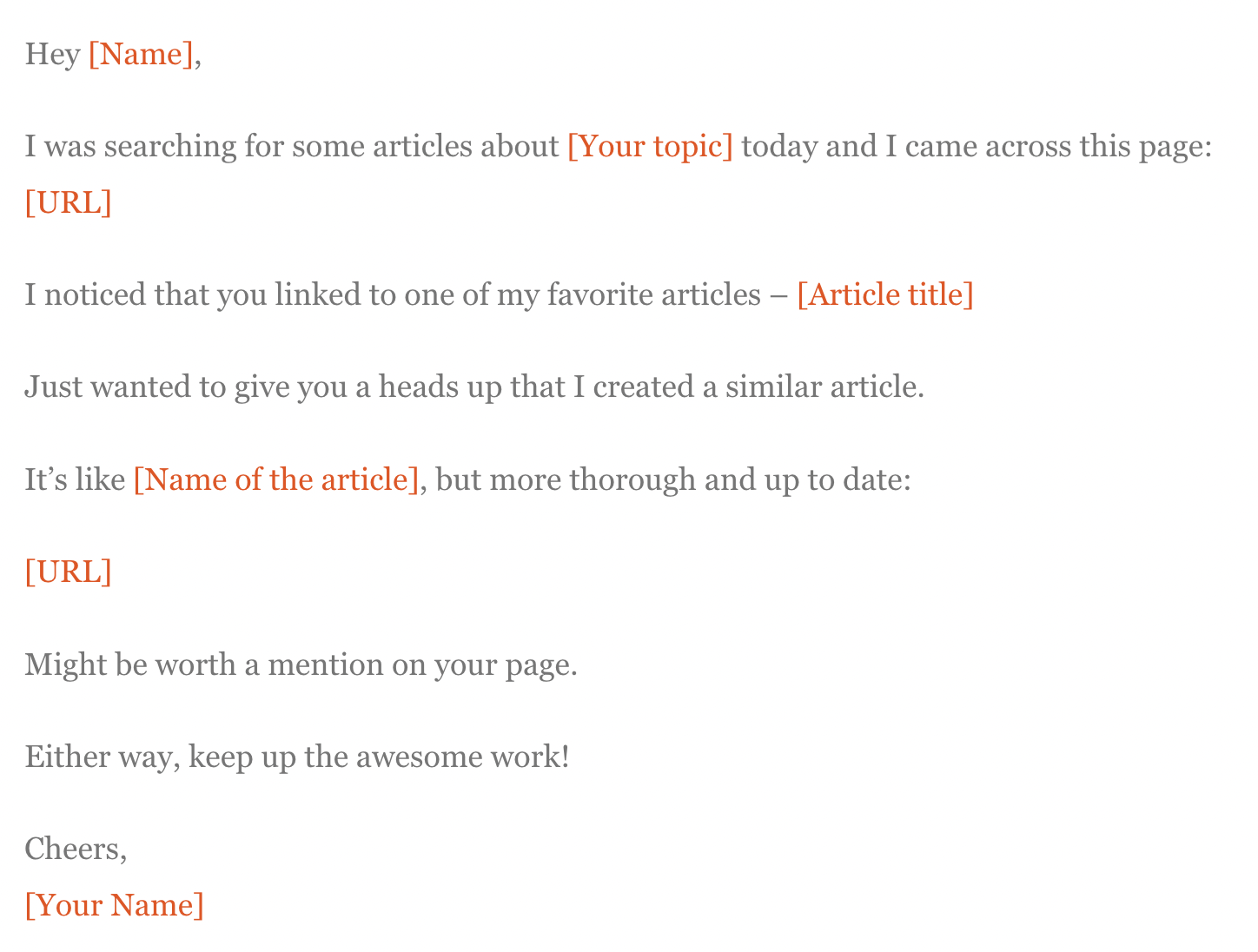
Source:Backlinko
Why is this tactic not working anymore?
The problem is that everyone started using the same email template Brian Dean published in 2013. Many people began to use that template without any changes.
To be honest, it worked perfectly for me for many years. Primarily when I pitched articles that outperformed my competitors’ content. Editors were happy to make a link replacement.
Now, when editors receive this email template, it’s a clear signal that someone is looking for a link.
Is this tactic dead?
Not completely. But you have to rework the strategy, and instead of using the traditional Skyscraper Technique, implement the upgraded version of it:
- Don’t use that exact template. Create your own pitch. From scratch.
- Make it personal and unique to the recipient.
- Provide a value in return. If you ask for a link, you should provide the editor something valuable in return (mention in your article, quick marketing consultation, etc).
2. Offer Reciprocal Link Exchanges
Concept
You reach out to the websites you want to get a link from with an offer to provide in exchange a link from your website. In other words, it's a “you link to me, and I’ll link to you” strategy.
Why is this tactic not working anymore?
These days Google penalizes those who actively use reciprocal link building tactics. In Google’s eyes, it’s another shady link scheme.
Is this tactic dead?
It’s not dead, and many websites are still using it. But if you want to grow your website’s authority and rankings, the key is to focus on less risky tactics.
3. Pitches with no value in return
Concept
You ask the editor for a link or a guest post without providing anything in return.
Why is this tactic not working anymore?
Editors’ inboxes are full of similar requests. Why should they link to you if they received ten similar requests today? You need to stand out and offer real value to your prospects to get that link.
For example, when I was at Hunter, I reached out to the editor of one of the popular email lookup listicles that didn’t mention our brand. I gave the editor access to our affiliate program, offered him a free Hunter package, and offered to write the content for the listicle.
One of the key link building rules: if you ask an editor for a link, you should provide something valuable in return.
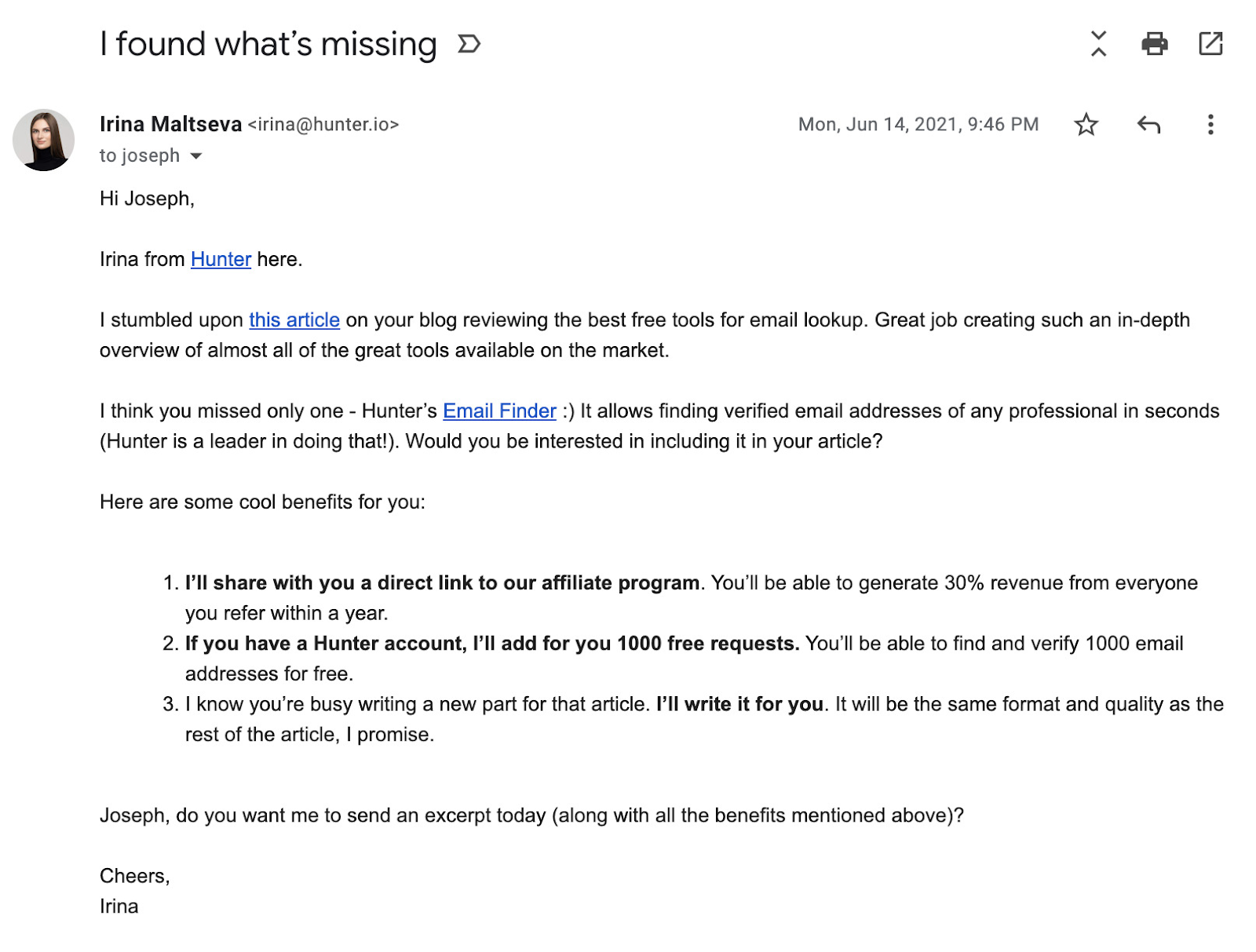
Is this tactic dead?
Yes, it’s dead if you contact high-quality websites that typically are difficult to get links from. Low-quality websites could sometimes be more flexible with link inserts. Often, they ask for money or a reciprocal link in exchange for help (which I don’t recommend doing if you don’t want to undo all of your SEO efforts).
4. Mass Guest Post Outreach and Full Automation
Concept
You send the same email to hundreds of people with minimum or zero personalization. On top of that, you automate the whole sequence and sometimes even your responses.
Why is this tactic not working anymore?
No one wants to be hit with mindless automation. Humans want to speak to humans, not robots.
Is this tactic dead?
Completely. When building links from high-quality websites, don’t rely entirely on automations.
Your New, Effective Link Building Outreach Strategy
If you want your cold link building emails to perform, follow these three simple rules:
1. Do Your Research
Before sending your cold email, do your homework and research the prospects. There are some basics you should follow:
- Find relevant decision-makers in the company (when it comes to link building, these are usually content managers, editors, and marketers);
- Quickly check their LinkedIn profile, website About page, and Google some additional info about your prospects (that will help you to create amazing ice-breakers);
- Review the content on their blog and get a clear picture of where your content would be most relevant (suggest a placement or a few that would be a great fit).
2. Personalize Every Single Email
Based on your research, personalize emails, digging deeper into the available public information and thinking about what you can offer the editor.
Avoid personalizing emails only on a basic level:
- Hey [name]
- You do a great job at [blog]
- Let’s add my link [here]
Make your email personal. And don’t be afraid to send follow-ups if you don’t hear from your prospect.
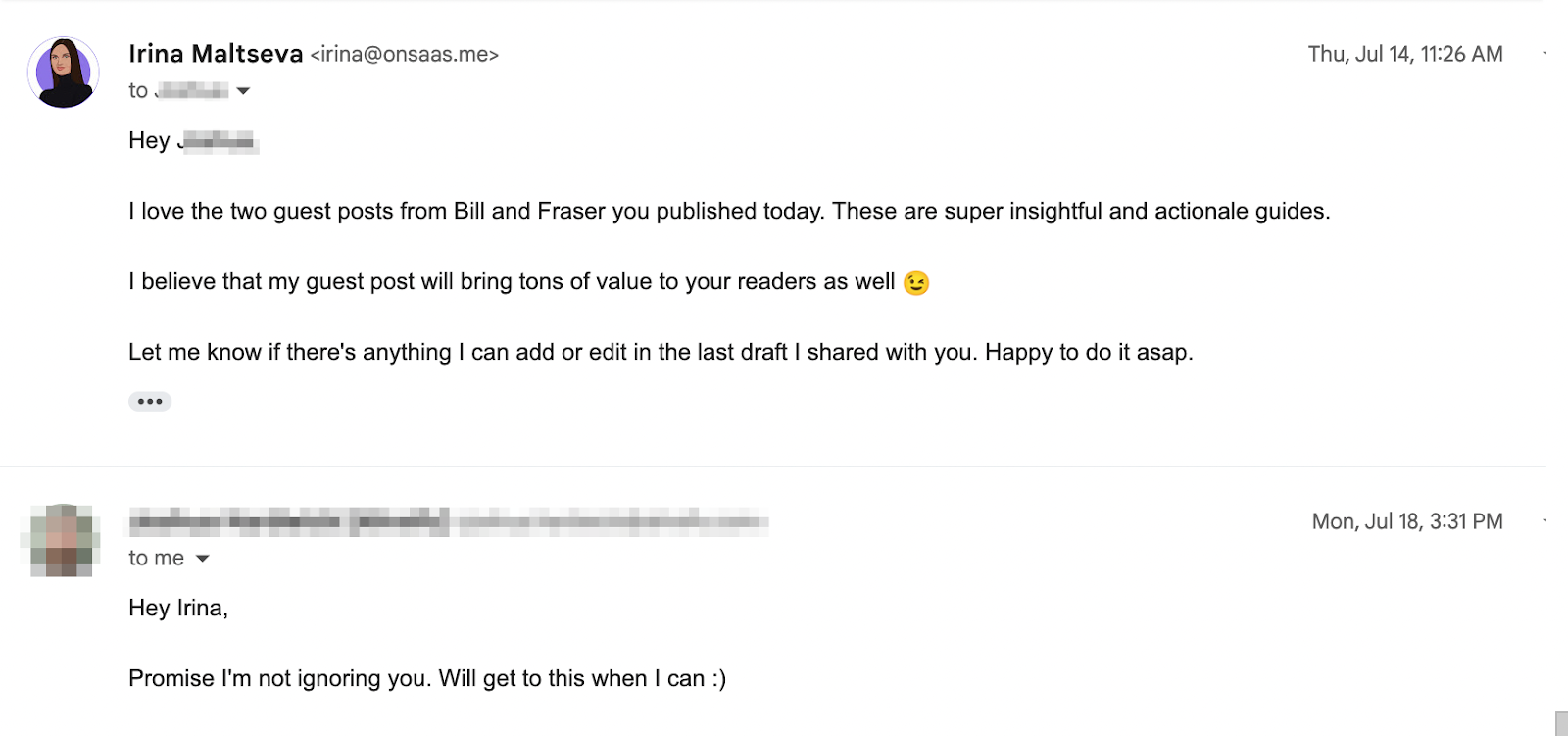
Sometimes even a small personalization is enough to get a response. I sent this follow-up a few weeks after submitting a guest post to the blog editor. Just showing the editor that I keep following their content and am really engaged with it, helped me to get a response (and get my guest post published!)
This strategy with small personalization works much better than “Hey, I just wanted to follow up on a previous email,” as you sound personal and show your honest interest in this collaboration.
3. Always Provide Value in Return
No value - no pitch.
When it comes to guest post pitches, often a great value for the editor is the keyword research you did for them. You can find a content gap and offer to write an SEO-optimized guest post that targets a specific keyword they’re missing. Your chances of getting a response are 100X higher when you include this SEO advantage than when sending a classic pitch with a few topics you want to cover.
That could be an example of a guest post pitch that provides this value:
Hi [name],
Irina from Aura is here.
You're doing great with the content on identity theft prevention at [company].
I noticed you're not ranking for the "how to check if someone is using my identity" keyword. It's quite an easy keyword to rank for, considering how powerful and relevant to the keyword your domain is. There is a 3.3K organic search volume behind it.
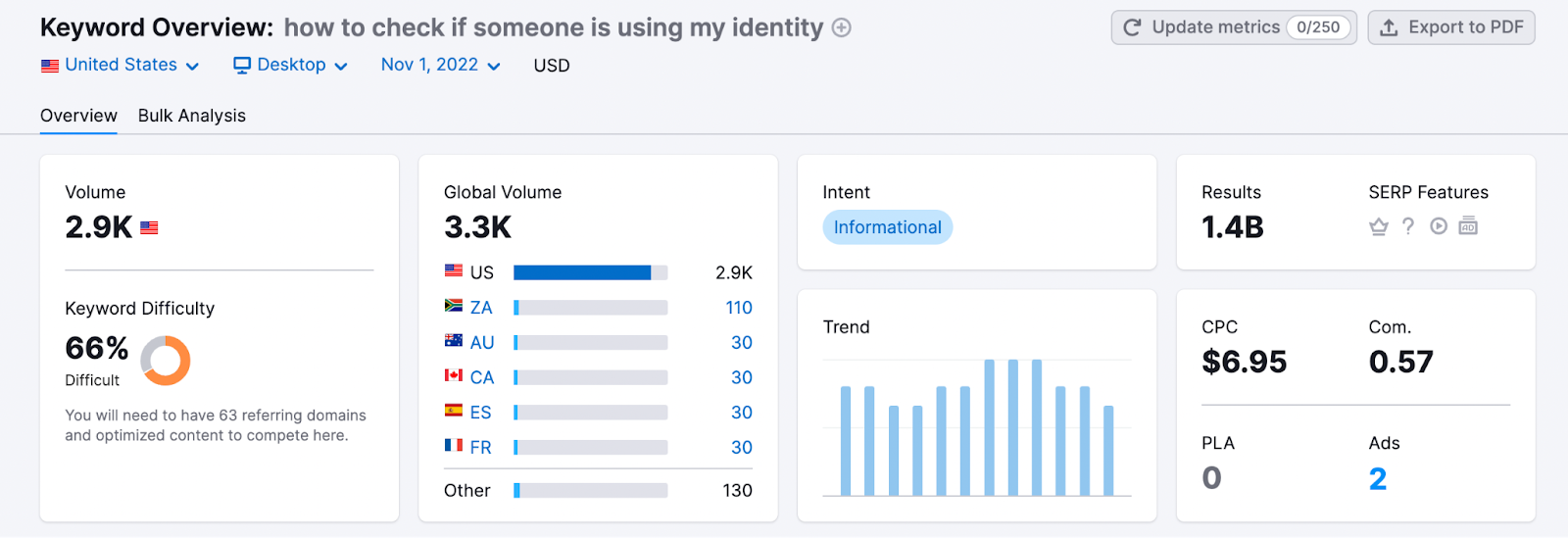
I created an in-depth 2,000 words guide covering this topic. It's fully optimized for search: I've run it through my content optimization tools and wrote it based on keyword research. It's 95% ready.
It would be an excellent fit for the [company] blog. Do you want to take a look at the draft?
Should you decide to publish it, I'll help you build a few backlinks for this guide to push its positions on SERP.
4 Outreach Tactics That Can Bring You Tons Of High-Quality Links
It’s always a good idea to explore new ways and strategies for link building. These are the top four that currently help me to acquire 90% of the links we build (and we build a lot of links at Aura!):
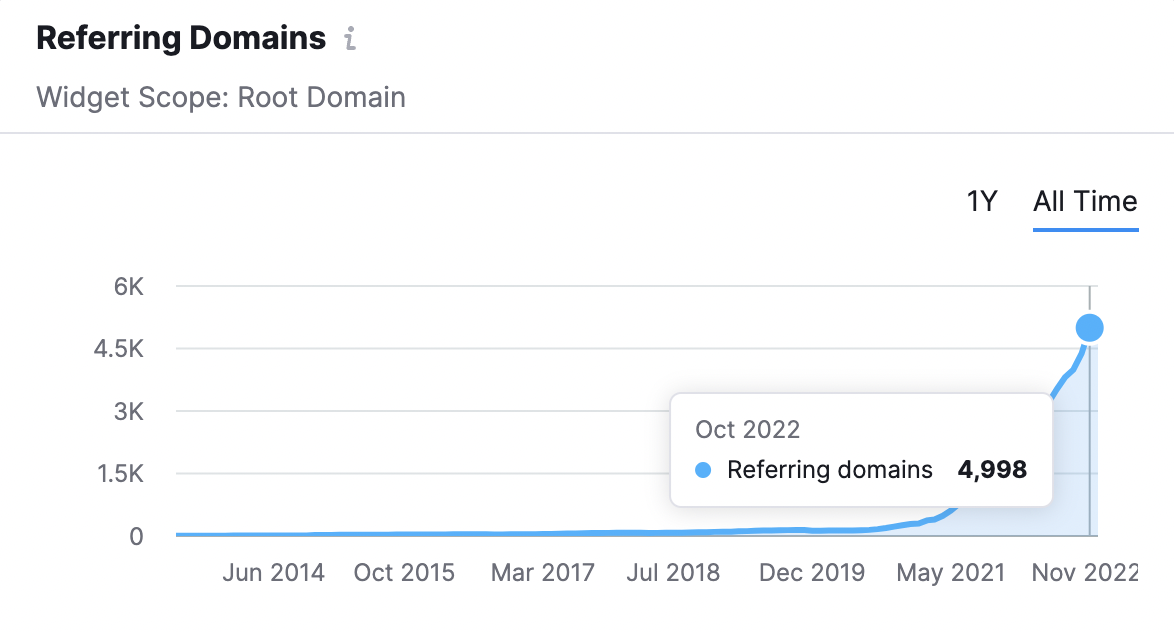
1. Relationship-based Link Building
When it’s time to run your next link building outreach campaign, stop thinking transactionally. Instead, consider how you can build relationships with a specific website or editor and help each other grow organically.
If you’re building links regularly, you already have a list of people you know who are open for link inserts, non-reciprocal link exchanges, and intros.
Note: Non-reciprocal links hold more weight, as they are not reciprocated, meaning that the search engines don’t see a link exchange with the websites where your links can be found. This tactic is fully safe to use, compared to shady “you link to me, and I link to you.”
By exchanging knowledge or just making win-win intros, you will increase both the quantity and quality of the links.
At some point, when you get enough powerful relationships with editors and link builders, you can stop doing cold outreach. You’ll constantly receive new opportunities from your link partners (obviously, if you keep doing the same in return).
2. Editorial Partnerships
If you are constantly writing guest posts to build links, this strategy is the one that will help you to get more high-quality links without extra effort.
Explore which companies in your niche (that are not your direct competitors) are regularly submitting guest posts and ask them if they’re interested in cross-referencing links and mentions in the upcoming guest posts.
You can find companies who submit guest posts in your niche in a few ways:
- Ask your link partners if they do it
- Check link building Slack and Facebook groups (you’ll easily spot active contributors)
- As active contributors to top industry blogs if they’re open for such collaborations
Once you have great and relevant to your link partners guest post opportunities, just ping them and ask if they have any relevant resources or quotes to add.
Here is an example of such a post published in a Slack link building community:

After publishing the guest post, let your partners know their link is live and add it to your tracking spreadsheet.
Typically, you can add 1-3 backlinks to your company in one guest post. Suppose you have a few reliable partners open to sharing their resource suggestions. In that case, you can easily double the links you receive from a single guest post (as long as these suggestions are relevant to the content and not salesy).
3. Listicle Outreach
Listicle outreach is one of the most effective but, at the same time, underestimated link building tactics.
In fact, I got 96 new backlinks from 54 referring domains in just three months by using this tactic only.
What are the “listicles”?
These are like, “the best SEO tools for 2022.” Listicles remain one of the most popular content formats used to review products or services.
This article on top credit protection services we recently published on Aura’s blog is a great example to illustrate the “listicle.” This listicle explains how to choose the right identity theft protection service and lists the most popular tools and their key features.
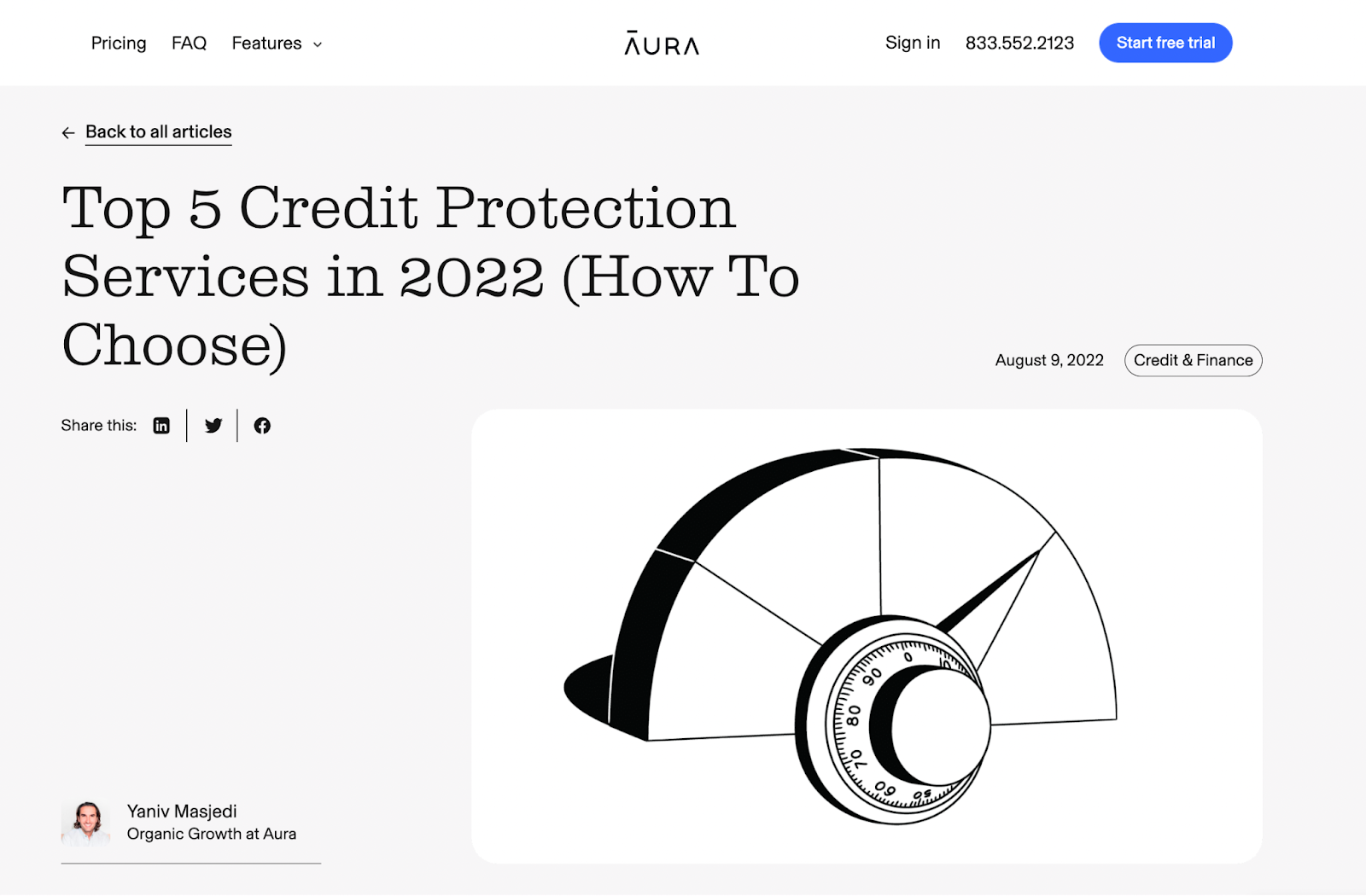
There are two most effective ways to build backlinks from the listicles:
- Identify the listicles that mention your competitors and don’t mention you.
- Find the listicles that mention your company without a backlink.
There’s an easy way to find valuable link-building opportunities with the Surround Sound by Semrush.
Create a campaign that includes the list of the target keywords to find relevant listicles (for example, for us at Aura, that would be “credit protection,” “identity theft protection,” etc.) Then, list the names of your top competitors.
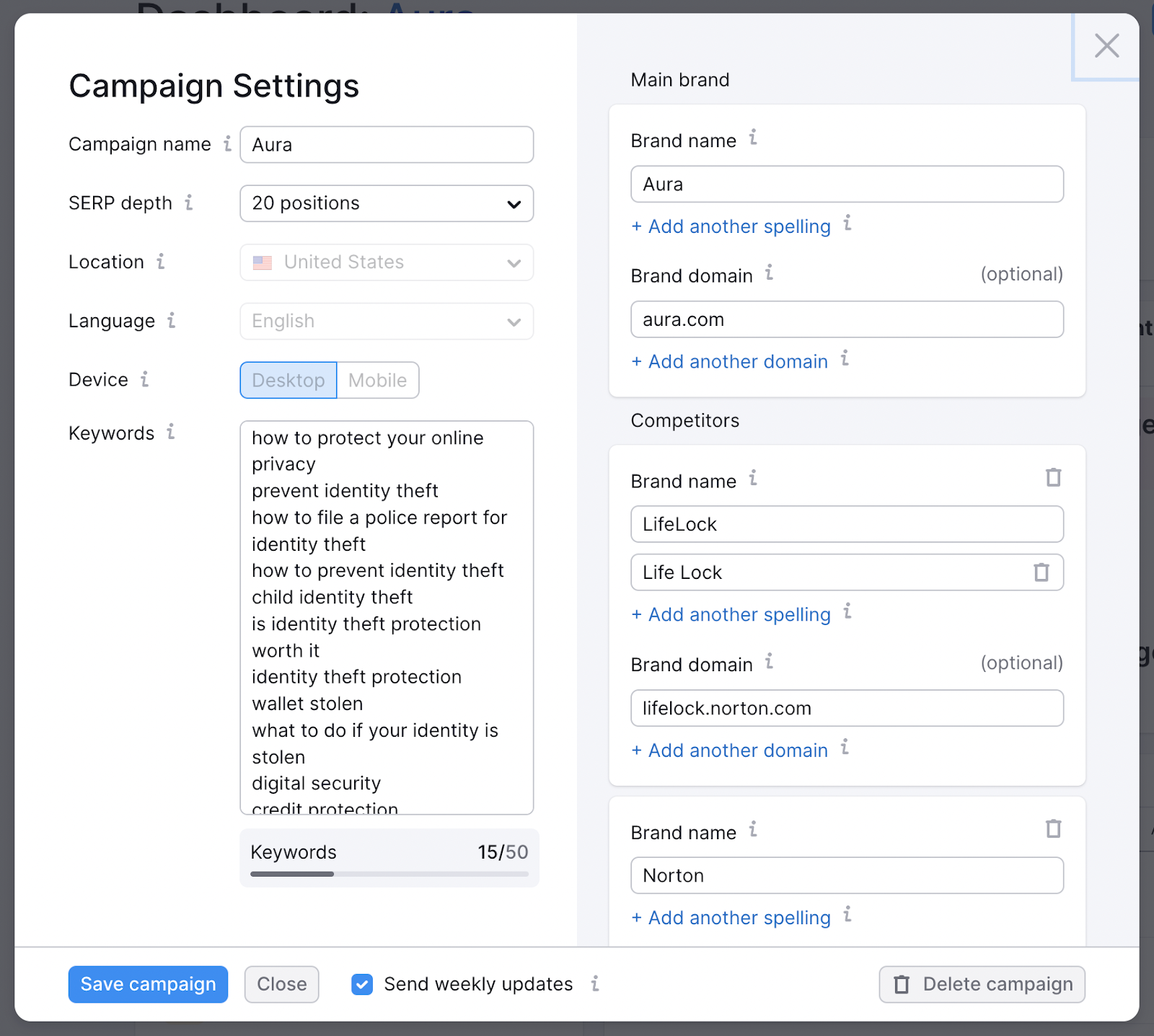
Surround Sound will automatically generate a list of opportunities for brand mentions and links.
Choose “Opportunities” from the drop-down menu on the “Pages” screen to create and export the list of the listicles where your competitors are mentioned and your brand is not.
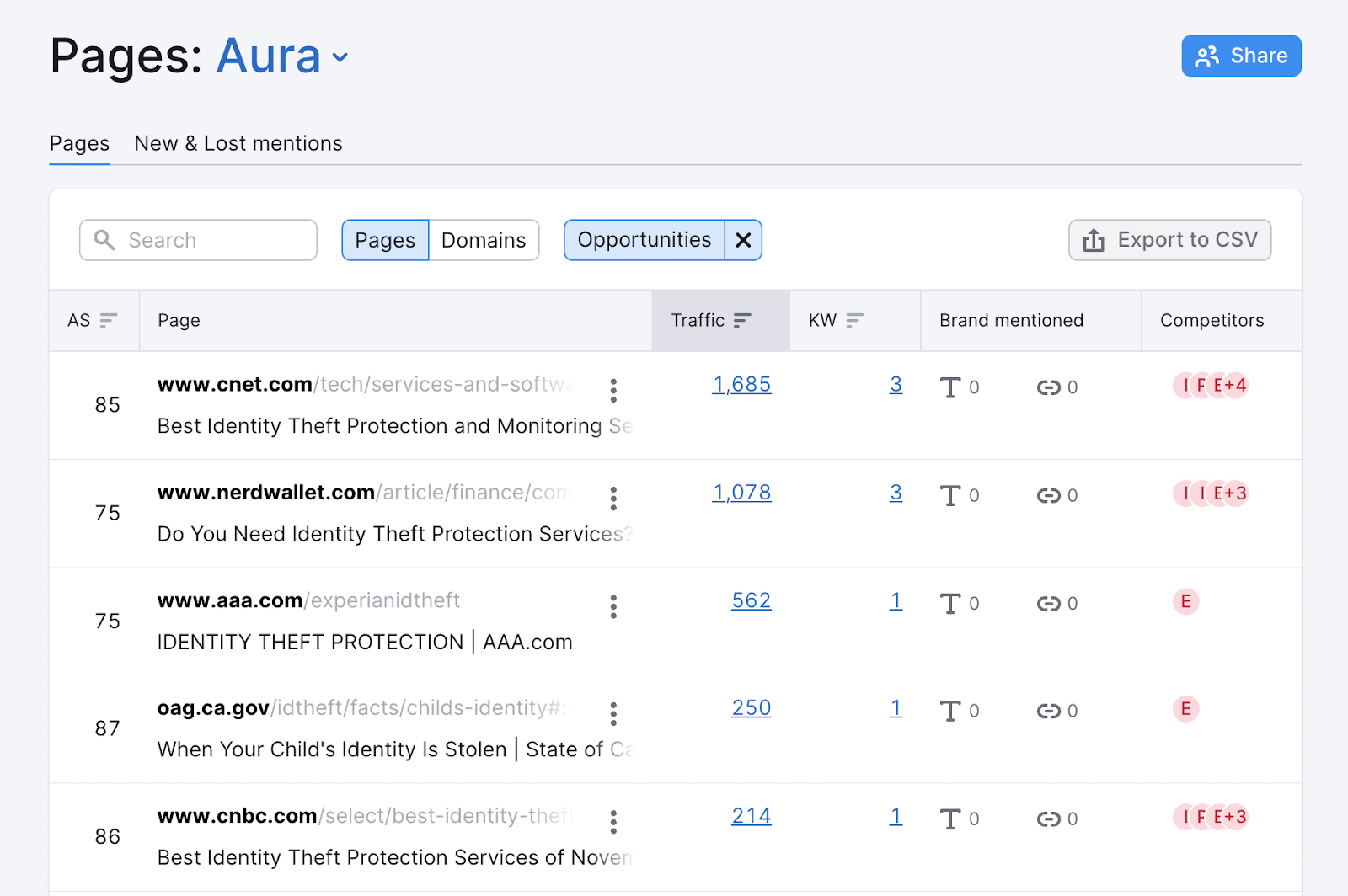
Change your “Opportunities” selection to “Mentioning” to review the list of liticles that mention your brand without a backlink (you can easily setup it up in filters):
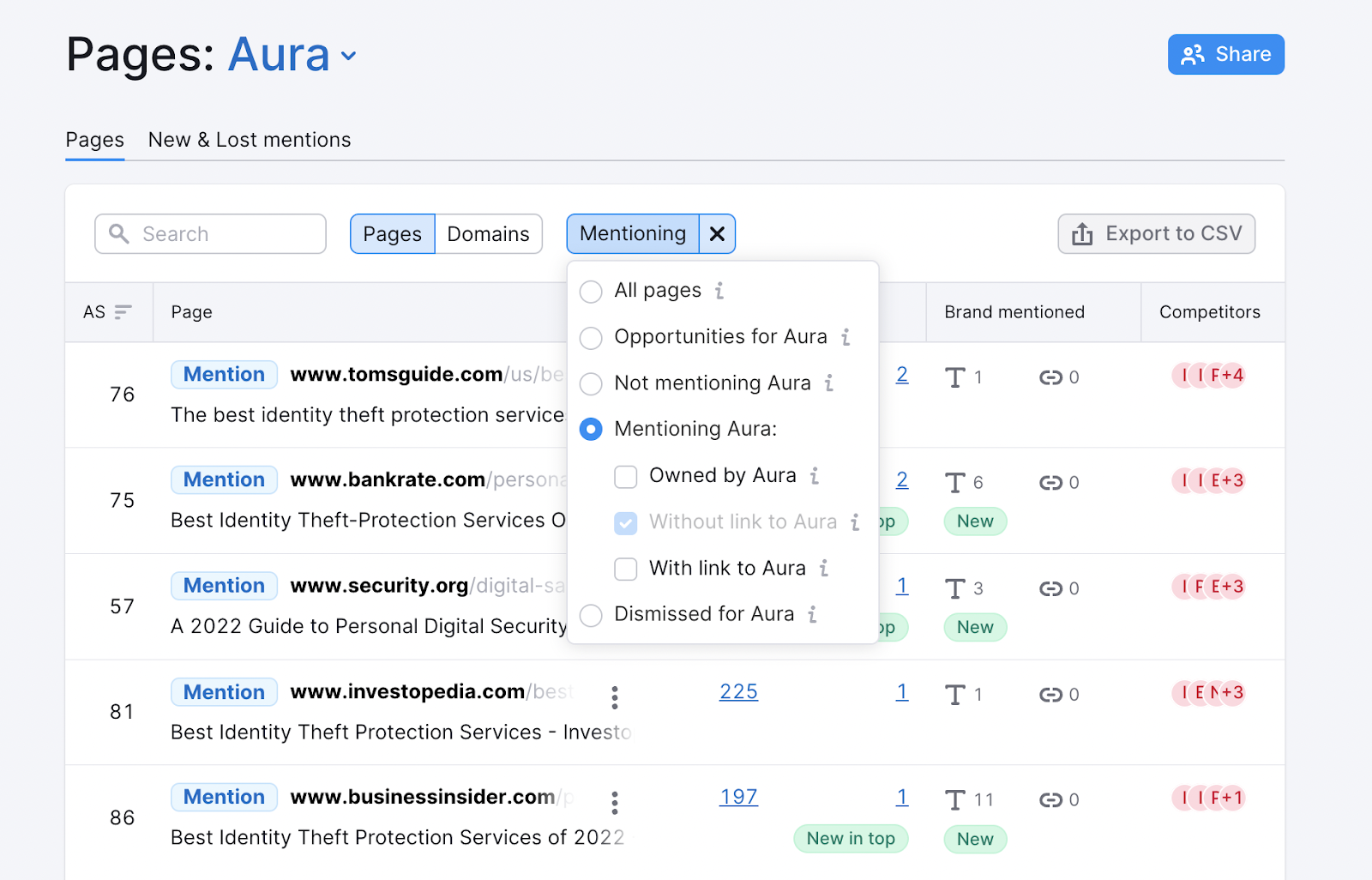
4. Link Reclamation
When it comes to any kind of marketing, always pursue the activities that require the least amount of investment for the largest returns. In the case of link building, never miss a chance to reclaim a lost link. It takes hours, sometimes days, and weeks to acquire one link, but losing links can happen in an instant. An editor may decide to update the article and remove your link or links could be removed accidentally.
Reclaiming the lost opportunities takes much less time than working on new ones from scratch.
Make it a habit to check your lost links report and immediately contact the editors when the important link disappears.
You can easily do it with Lost Links Report at Semrush:
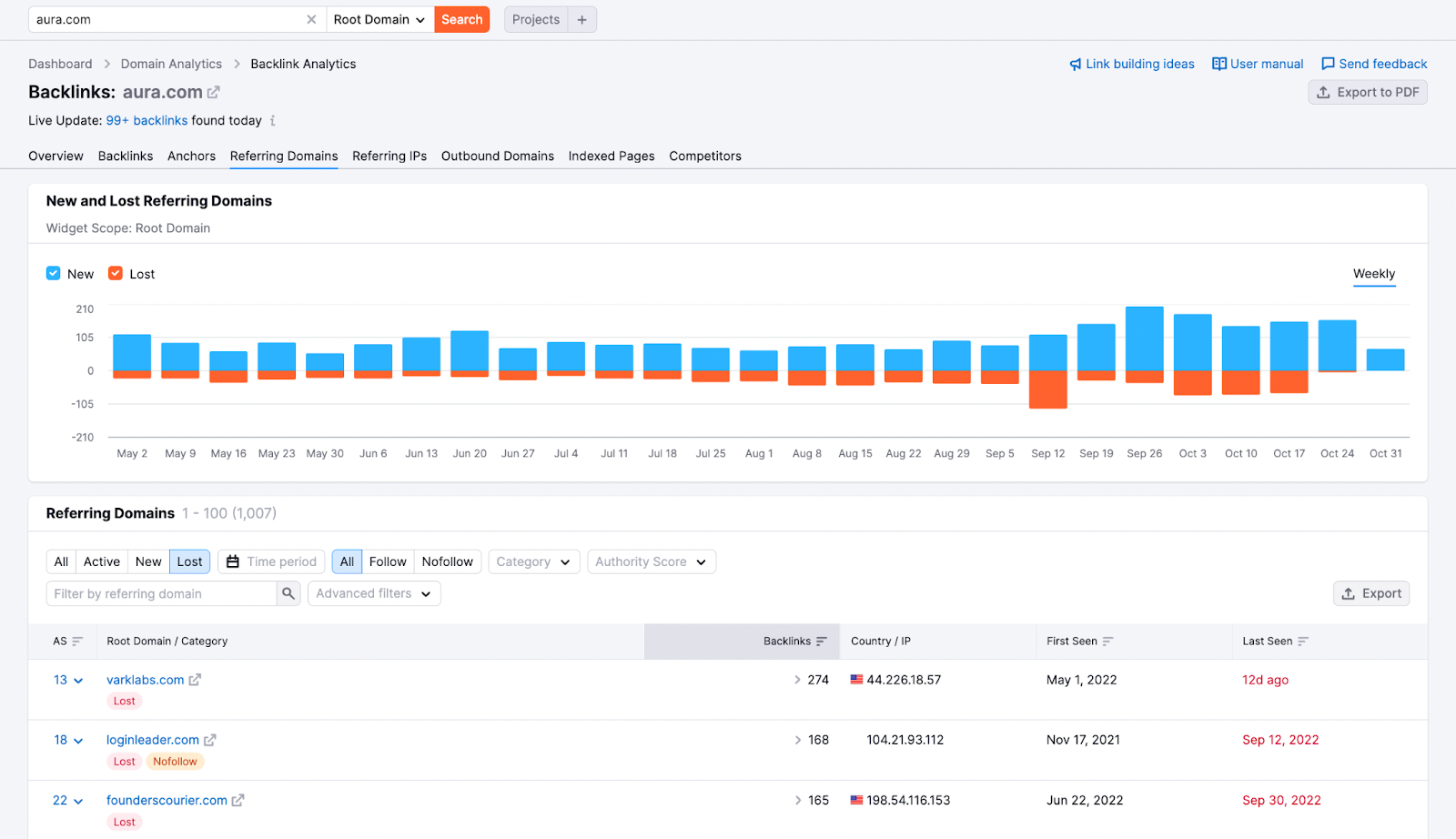
The key idea behind this strategy is to monitor lost links regularly and be fast when you see an essential link lost. The quicker your reach out to the editor, the higher chances you will get your link back.
Conclusion
Link building in 2022 is much different than it was ten years ago. If you want to build high-quality links now, you should avoid using link building techniques from the past.
Instead of using mass outreach and emails with zero personalization, pursue more personalized approaches; and building long-lasting relationships can bring you better results than thinking transactionally about each prospect as a one-time opportunity.
When creating a link building pitch, do your research in advance, personalize emails meaningfully, and always provide value in return.
